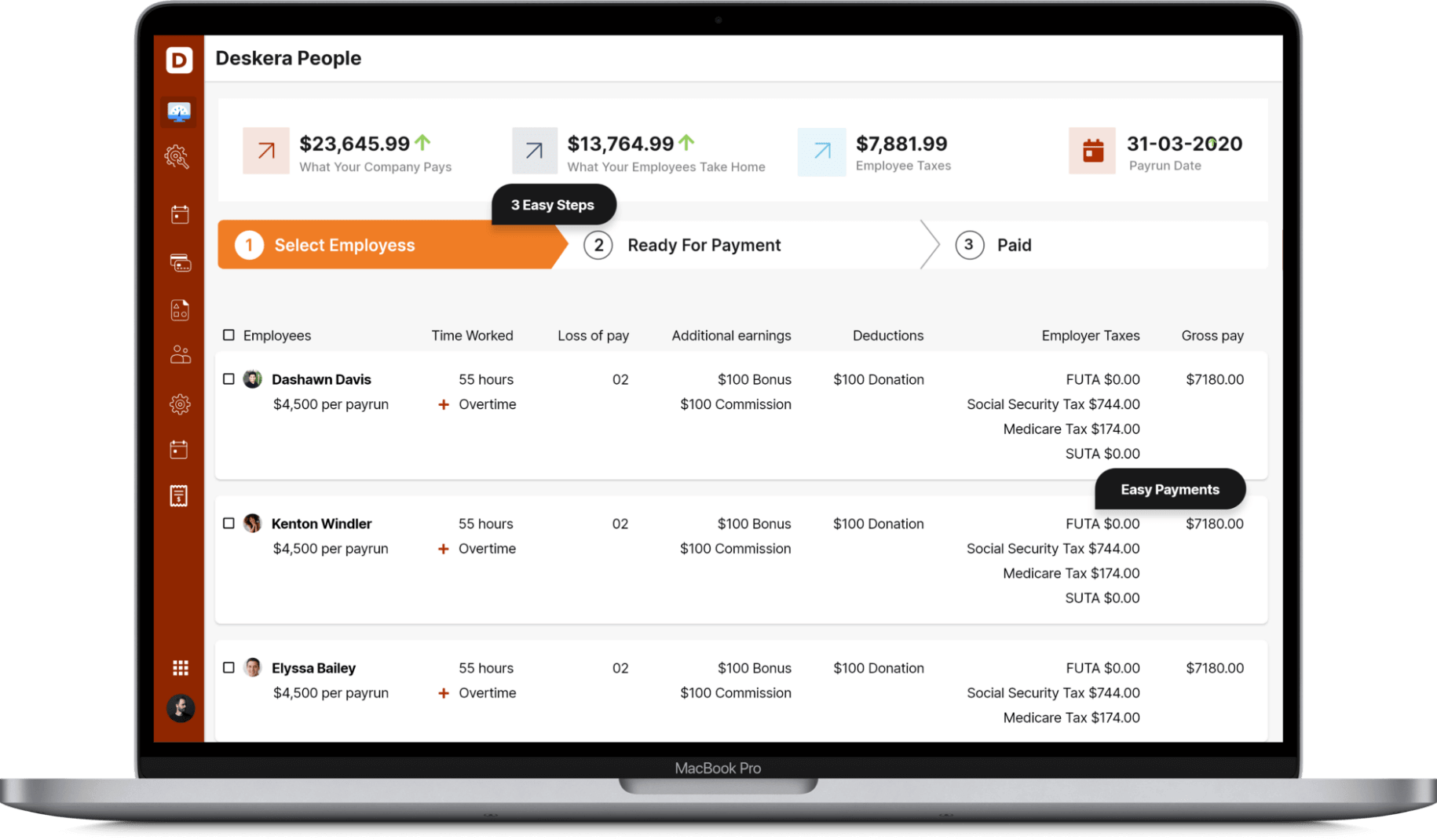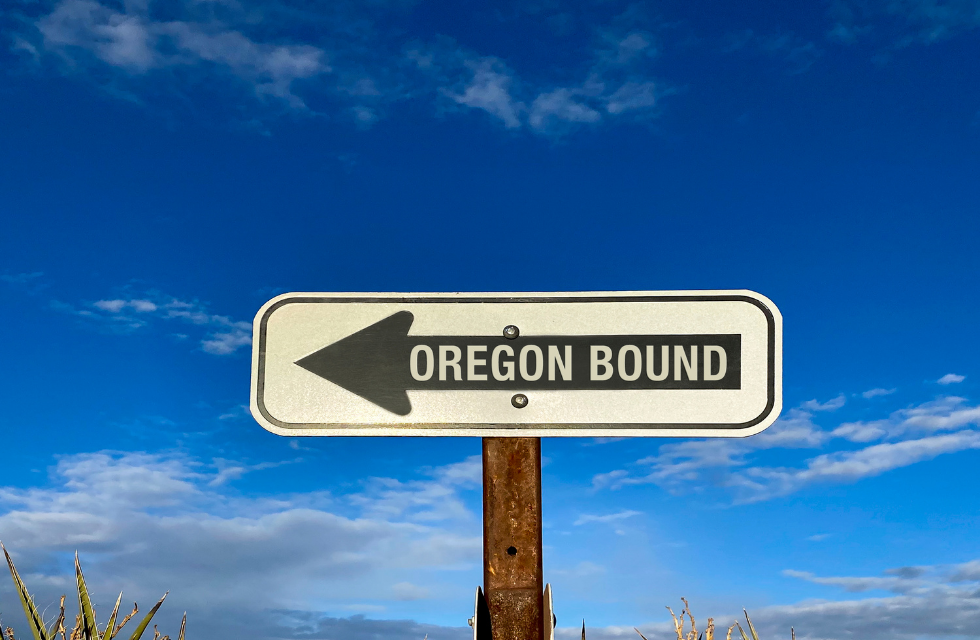There are a lot of moving factors when it comes to payroll processing in Oregon. You must examine various factors when paying an employee in the state, including the minimum wage, hours worked, overtime, allowable deductions, payroll tax, and more.
Understanding federal, state, and even municipal payroll regulations is critical in cities like Portland to avoid employee-government confrontations. Keep in mind that if you don't have the time or resources to comprehend or comply with the law, an Oregon payroll service may be the best option for you.
Table of Contents
- Terms & Definitions Related to Oregon Payroll Taxes
- Minimum Wage in Oregon
- Days and Hours of Work Oregon's Worked Requirements
- Oregon’s Payroll Tax
- Requirements for Wage Deductions in Oregon
- Rules for Pay Schedules in Oregon
- Oregon's Wage Payment Methods
- Employee Time Reporting Requirements in Oregon
- Regulations on Travel Time in Oregon
- Wage Statement for Oregon
- Step-by-Step Guide to Running Oregon’s Payroll
- Bottom Line
- Related Articles
Employers in Oregon should be aware of the following payroll-related terms and definitions.
Terms & Definitions Related to Oregon Payroll Taxes
Minimum Wage in Oregon
While the federal minimum wage is now $7.25 per hour, Oregon's minimum pay is substantially higher and can vary greatly depending on the location or city. On July 1, 2021, the minimum hourly rate in nonurban regions will be $12.00, $12.75 in standard counties, and $14.00 in the Portland metro area.
According to Oregon law, you must pay the employee the most advantageous rate, which is the state minimum wage. All paid workers, including children and those in formal training, are subject to the minimum wage obligation. It rises on July 1st every year, but the tendency will reverse after 2022.
The state's minimum wage will increase based on inflation as measured by the Consumer Price Index beginning July 1, 2023. This inflation-based minimum wage rate is also becoming more widespread in many other states.
Days and Hours of Work Oregon's Worked Requirements
According to Oregon's minimum wage law, a workday is defined as a continuous period of 24 hours. A workweek, on the other hand, is a set of seven consecutive days that happens on a regular basis.
Employees must be compensated for all hours performed. Hours worked are defined as all hours an employee commits to their employer under Oregon's minimum wage statute. This covers time spent on duty at the employer's location as well as time spent away from the workplace.
Further, Oregon recognises work requested as well as suffering or accepted unrequested work as hours performed. If an employer does not want a worker to complete work, the employer must make certain that the employee does not perform it.
Oregon’s Payroll Tax
Employers in or operating in Oregon are required to withhold tax from earnings received from Oregon citizens working in or outside the state. They must also comply with the same requirements for non-residents who provide services in Oregon.
Before paying employees in Oregon, an employer must first get a business identification number (BIN). Corporations without employees should have a BIN to report executive compensation.
The deadline for Oregon to withhold taxes and federal taxes is April 30. The final day of the month after a calendar quarter is when unemployment and transit taxes are due. If you pay your federal taxes electronically, you should also pay your combined payroll taxes electronically.
Requirements for Wage Deductions in Oregon
Employers in Oregon must follow specific guidelines when it comes to withholding or deducting a portion of an employee's earnings. You can only make deductions as an employer if:
- You are required to do so by state or federal law.
- By writing, the employee has allowed a deduction for their personal advantage.
- If you aren't the final beneficiary of the money, the employee willingly allows a deduction for some item.
- Under Oregon Statute 18.736, the deduction constitutes a garnishment.
- The deduction is authorised by a collective bargaining agreement to which you are a party.
- You're deducting money from a worker's wages after they're fired to repay a loan you granted them.
However, the state prevents you from deducting or withholding any sum from an employee's salary in numerous cases. Deductions to pay the following expenses are examples:
- Cash limitations
- Checks that have been returned or have been dishonoured
- Employer's property has been damaged or lost
- Tools, clothing, and other work-related goods.
Rules for Pay Schedules in Oregon
Every company in Oregon is required to create and adhere to a regular payday when all employees are paid their salaries. Section 652.120, on the other hand, allows you to enter into a signed contract with your employees to pay them at a later date.
In most cases, the payday should not be more than 35 days after you hired an employee or since your previous normal paycheck. Employers have the option of setting and maintaining more regular pay periods.
Oregon's Wage Payment Methods
Your staff can be paid in cash, cheque, or direct deposit. The employee's bank should be able to redeem a payment check at face value with no deductions. The employee must agree to be paid through direct deposit, payroll card, ATM card, or any other electronic means.
Employees should be able to withdraw their net salary for free using electronic payment methods. A worker must provide you with written notification if they want to rescind their agreement to electronic deposits. It takes 30 days for the revocation to take effect once you get it.
Employee Time Reporting Requirements in Oregon
Employers in Oregon are only required to pay employees for the hours they work. As a result, if an employee does not work, you do not have to pay them for showing up or reporting. You also don't have to pay a worker for the minimal amount of hours if you fire them before they finish their shift.
Regulations on Travel Time in Oregon
It might be difficult to know when to reward an employee for travel time. There are various rules in Oregon that regulate whether travel time counts as work time, including
- Commute from Home to Work
In Oregon, travelling between home and work is not considered compensable employment. As a result, companies are not required to compensate employees for commuting time.
- When Traveling Is Required As Part of Your Job
Travel time should be compensated if it is a primary activity in an employee's workday. This entails going to different employment places. Employees who work at a fixed location but must commute to different work sites 30 miles away are in the same boat.
- Travel for Emergency Jobs
After their shift, you may require an employee to conduct an emergency work off-site. You must calculate the employee's travel time as hours worked if the employment site is a long distance away, say beyond a 30-mile radius. You may cut travel time by the number of hours it takes your personnel to get to the job site and return to your office.
- Travelling Overnight
On a workday, businesses should track the time spent by employees travelling overnight from their home location. Even if the travel takes place on a day when the employee isn't scheduled to work, you should compensate them.
Wage Statement for Oregon
When paying wages in Oregon, employers must give employees an itemised pay stub. Any deductions from wages should be shown and described on the statement. You can attach the report to the employee's paycheck or other payment documents.
Let's get started with the step-by-step guide to processing the payroll after learning the essential words and meanings of Oregon payroll taxes.
Step-by-Step Guide to Running Oregon’s Payroll
Step 1: Register your company as an employer
You must get a Federal Employer Identification Number if your organisation does not already have one (FEIN). This is a straightforward procedure that may be accomplished entirely online using the Electronic Federal Tax Payment System (EFTPS). To pay federal taxes, you'll need your FEIN.
Step 2: Register with the state of Oregon
You must register your new business with the Oregon Secretary of State's Oregon Business Registry. Some towns and counties also need you to register directly with them. You may look up your company's location to check if it requires local registration. The Oregon Department of Revenue requires every firm that pays employees in Oregon to register. Oregon offers a beginning toolkit that includes information and resources to assist you in completing the tasks.
Step 3: Set up your payroll system
It's possible that you'll inherit a payroll procedure from an existing company. If it does, or if your organisation is spanking new, you might want to tweak the procedure to assist you to streamline your steps. Overall, you have the option of doing payroll manually (which is not advised), using an Excel payroll template, or using a payroll service to assist you with your payroll.
Step 4: Have staff complete the necessary paperwork
You must gather certain federal and state forms from new personnel throughout the onboarding process. On their first day on the job, every employee must undergo I-9 verification. A completed W-4 must also be on file for new workers. Employees must also complete Oregon Form OR-W-4, which is required by the state.
Step 5: Go over the timesheets and approve them
When you collect and evaluate timesheets for your employees many days before your paycheck is due, your payroll processing will begin. Starting a few days early allows you to recognise and fix any concerns with staff time management. Examine timesheets for accuracy whether you use paper timesheets or time and attendance software.
If you use paper timesheets, have your employees sign them before handing them over to you. That is confirmation that they agree to be paid for the hours specified, and you won't have to go after them afterwards. The advantage of adopting an electronic system is that it includes a feature that allows your staff to digitally sign their timesheets.
Step 6: Compute the gross compensation and taxes for each employee
If you're using pen and paper or spreadsheets to conduct payroll, this is when things become extremely tricky. A payroll software programme may help you standardise the procedure and ensure that you don't forget any processes or make any errors in your computations. You can also refer to our payroll calculator instructions.
Oregon has one of the highest income taxes in the US, with additional taxes imposed by municipal governments. The tax system in Oregon is progressive, which means that the greater an employee's wage, the larger the tax burden. Making these calculations by hand will be difficult and might result in costly errors. These errors may be avoided using payroll software.
|
Tax Rate |
Taxable income for
single/ married filing separately |
Taxable income for
married filing separately |
Taxable income for
the head of household |
|
4.75% |
$0-$3,600 |
$0-$7,200 |
$0-$7,200 |
|
6.75% |
$3,601-$9,050 |
$7,201-$18,100 |
$7,201-$18,100 |
|
8.75% |
$9,051-$125,000 |
$18,101-$250,000 |
$18,101-$250,000 |
|
9.90% |
$125,001 and up |
$250,001 and up |
$250,001 and up |
Step 7: Reimburse employees for their salary, benefits, and taxes
Direct deposit is used by the great majority of businesses and employees, however, cash (not the best alternative) and paper checks are also available. Make sure your employees are paid at least the Oregon minimum wage, which rises every year on July 1 and varies depending on where they work (more detail on minimum wage further down). You may pay both your federal and state taxes online in Oregon. If you utilise a benefits provider, they should collaborate with you to make deductions as straightforward, automated, and electronic as possible.
Step 8: Create a copy of your payroll records as a backup
You should keep a copy of this document for at least many years, just like any other company record. Companies must preserve timesheets or time records for at least two years, and all other payroll records for at least three years, according to Oregon law. Because these documents may be stored online, payroll software can help you conserve room in your filing cabinet.
Step 9: Enroll to submit payroll taxes with the federal and state agencies
All Oregon state taxes must be paid on time, generally quarterly, to the appropriate state agency, which you may do online at the Oregon Department of Revenue website. You can pay your federal taxes online via the EFTPS system on one of two schedules:
Monthly: When the IRS sets you a monthly schedule, you must deposit employment taxes on payments made during that calendar month by the 15th of the next month.
Semi-weekly: When the IRS gives you a semi-weekly schedule, you should submit employment taxes by the following Wednesday for payments made Wednesday, Thursday, and Friday, and by the following Friday for payments made Saturday, Sunday, Monday, and Tuesday.
Please keep in mind that the reporting and depositing of employment taxes are two separate things. You must submit taxes quarterly on Form 941 or yearly on Form 944, regardless of your payment schedule.
Step 10: Compile the year's payroll reports
Every year, you'll have to submit payroll reports, along with all W-2 and 1099 forms. Employees and contractors must have these forms in their possession by January 31 of the following year.
How Can Deskera Assist You?
Deskera People make it simple to handle attendance, leave, payroll, and other processes so that you can focus on making the best decisions. For example, creating payslips for your employees is now simple since the platform also automates and digitizes HR tasks.
Deskera People provides all the employee's essential information at a glance with the employee grid. With sorting options embedded in each column of the grid, it is easier to get the information you want.

Bottom Line
Oregon's payroll is more complicated than others, but it's still easier than California's. There is only one state-specific form, but you must pay attention to numerous taxes.
Using payroll software is one approach to guarantee you don't make any mistakes or skip any tasks. There is a wide range of software available. Make sure you go with a reputable brand!
Related Articles














